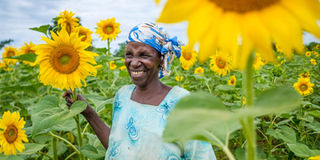EAC losing out in horticulture, leather exports

What you need to know:
- Prospects: Uganda Investment Authority (UIA) indicates a huge employment prospective by the leather industry.
- Domestic demand for footwear was at roughly 25 million pairs in 2017 but only a million was manufactured locally, the rest was imported from China, Turkey and United Arab Emirates.
East African Community (EAC) partner states are losing out billions of dollars over failure to add value to horticulture and leather products made in the region.
EAC members have also failed to address bottlenecks derailing growth in the sectors.
These developments were revealed in a report launched by the East African Business Council (EABC) in collaboration with GiZ Programme, ‘Support to East African people-centred and market-driven co-operation’ titled, ‘Building the Leather, Fruits and Vegetable value chains in the East African Community’.
The report finds that the region provides a good resource base for the production of hides and skins, having over 188.1 million livestock (cattle, sheep and goats). Despite East Africa currently having a monthly demand of about 600,000 pairs of industrial shoes (security, safety and industry), production is only about 60,000 shoes per month.
The report further shows that the EAC region processes leather up to wet blue stage with a minimal transformation to finished leather. On the international market, the price of finished leather costs about $5 (Shs18,527) per square feet (ft²), while the wet blue is sold at $1.5 (Shs5,558.01) per ft².
This suggests that the EAC, which exports mainly wet blue, loses as much as $3.5 (Shs12,969) per ft². This implies that the EAC in effect lost close to $3.2 billion in the last four years, which is 2014-2018.
Dr Peter Mathuki, the executive director, EABC while unveiling the report last week noted that the leather industry has suffered due to the high presence of imported used footwear as well as synthetic shoes.
“These imports are priced way below the production costs of local producers, thus reducing the market for a sector that is still not getting adequate financing,” he said.
The report also finds that there is a huge opportunity for increasing economic growth in the horticulture sector as exports of manufactured goods remain limited.
Most farmers have limited finances for capital investment and to purchase inputs. Inadequate processing facilities close to the sources of their produce has also deterred the region from fully exploiting the potential of the sector.




